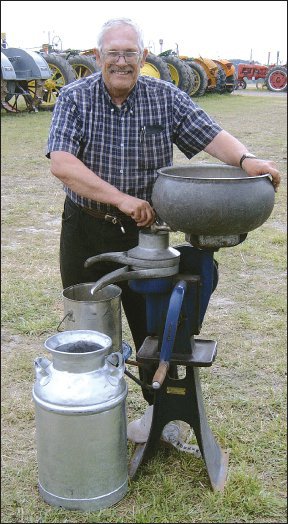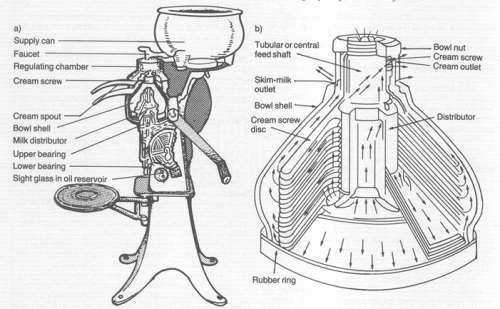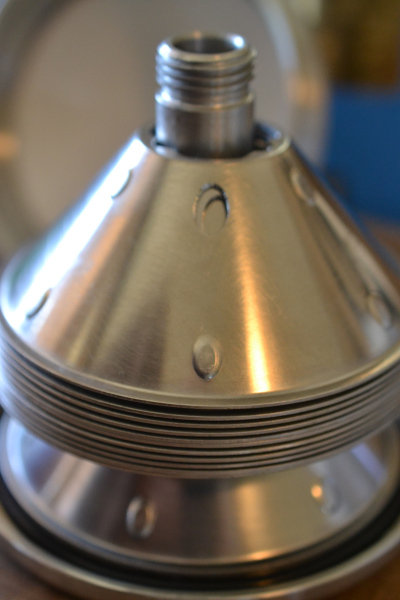Cream Separators
by Sarah Bowman
Cream Separators were a common form of milk processing used from their invention in the late 1800s into the 1970s.
Lizbet and Christina would have used a cream separator similar to the one shown here. Please note: The images below were retrieved Feb. 21 2016; links may no longer work.

Dennis Nickerson has his hand on the crank that drove this 1930s Montgomery Ward & Co. cream separator. Raw milk was poured into the large bowl, the crank turned, and eventually cream came out of one spout and skim milk out of the other. FROM: http://www.farmcollector.com/equipment/separators-pasteurizers-and-testers.aspx
Diagram and Description of Cream Separator, taken from https://www.ilri.org/InfoServ/Webpub/fulldocs/ilca_manual4/MilkProcessing.htm The machine is on the left, and the bowl on the right. Description below diagram is direct quote from the International Livestock Research Institute’s website.

The centrifugal separator was invented in 1897. By the turn of the century it had altered the dairy industry by making centralised dairy processing possible for the first time.
It also allowed removal of cream and recovery of the skim milk in a fresh state.
The separation of cream from milk in the centrifugal separator is based on the fact that when liquids of different specific gravities revolve around the same centre at the same distance with the same angular velocity, a greater centrifugal force is exerted on the heavier liquid than on the lighter one. Milk can be regarded as two liquids of different specific gravities, the serum and the fat.
Milk enters the rapidly revolving bowl at the top, the middle or the bottom of the bowl (Figure 13). When the bowl is revolving rapidly the force of gravity is overcome by the centrifugal force, which is 5000 to 10 000 times greater than gravitational force. Every particle in the rotating vessel is subjected to a force which is determined by the distance of the particle from the axis of rotation and its angular velocity.
SEPARATOR BOWL
Base and Bowl Shell

Disks for Separator Bowl

IMAGES FROM http://grassfood.me/2013/05/23/separating-liquid-gold-part-1-assembling-the-cream-separator/ See the website for assembly photos and instructions.
